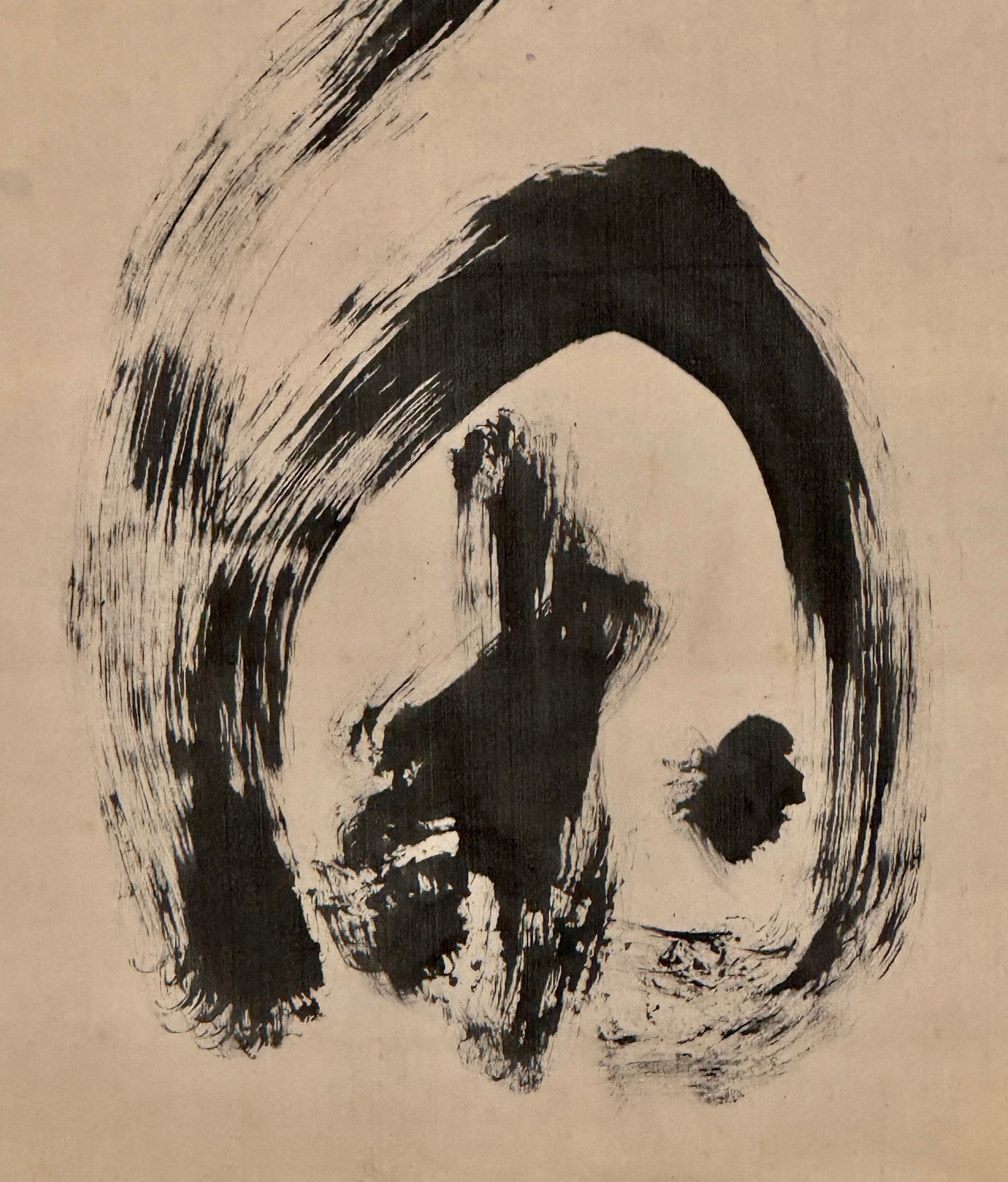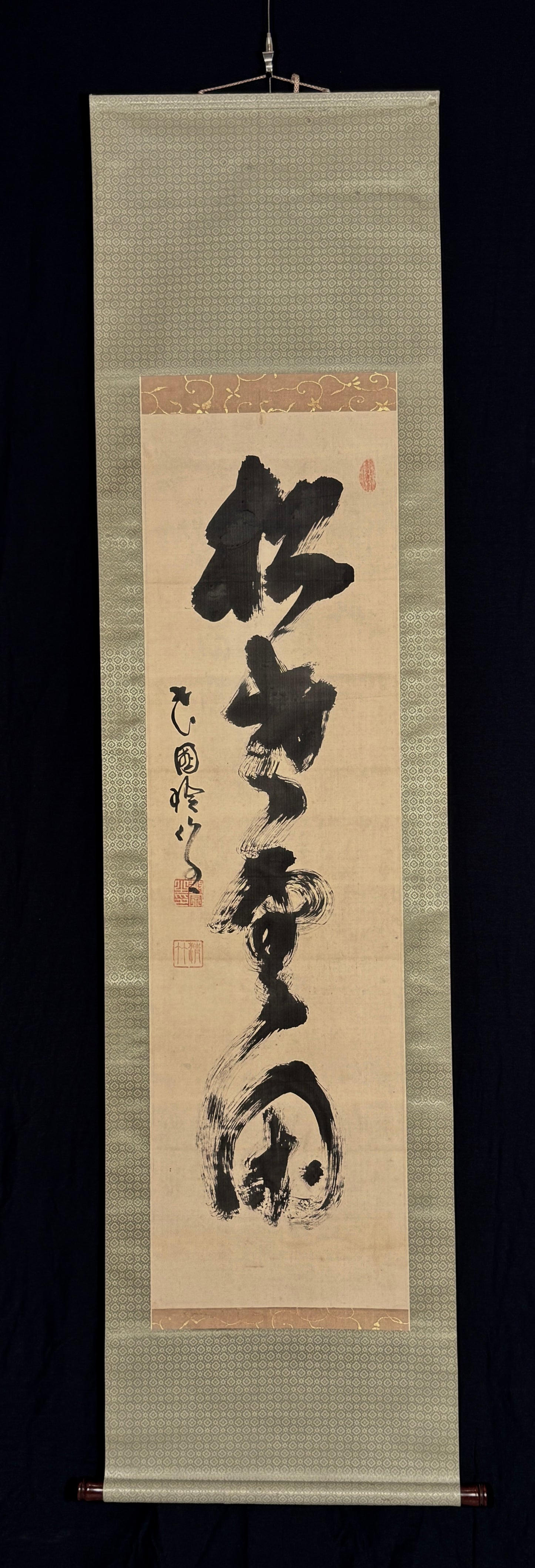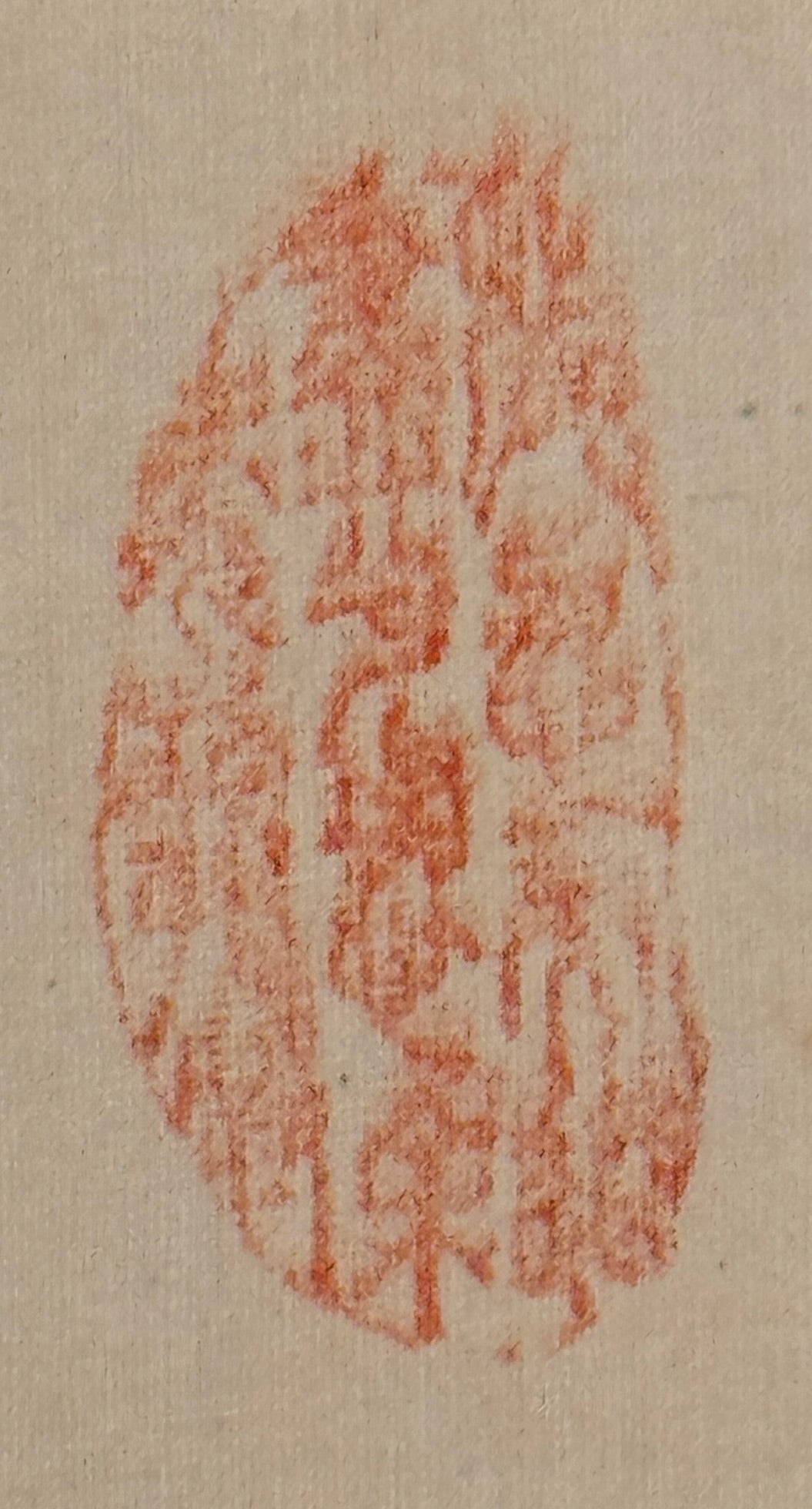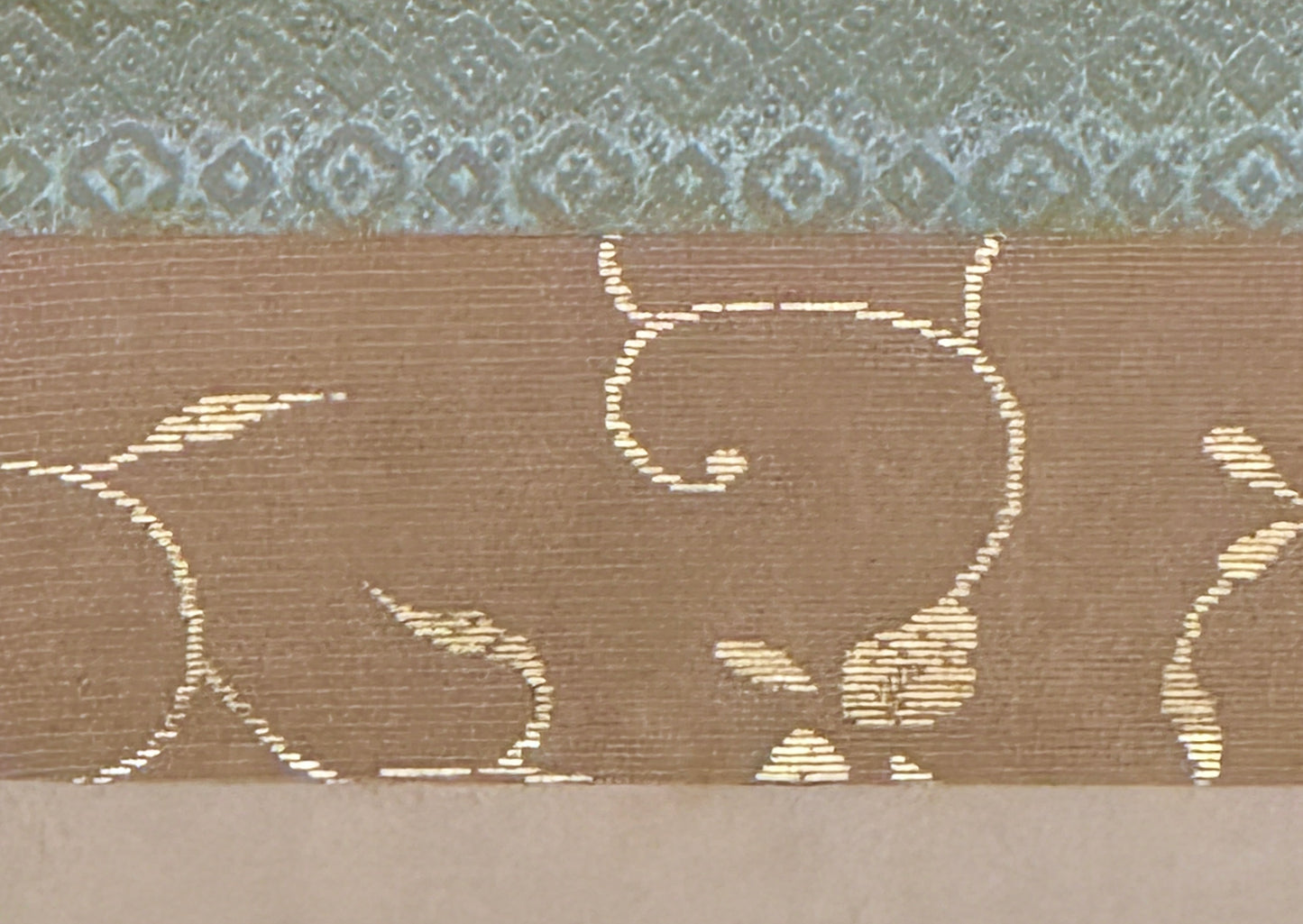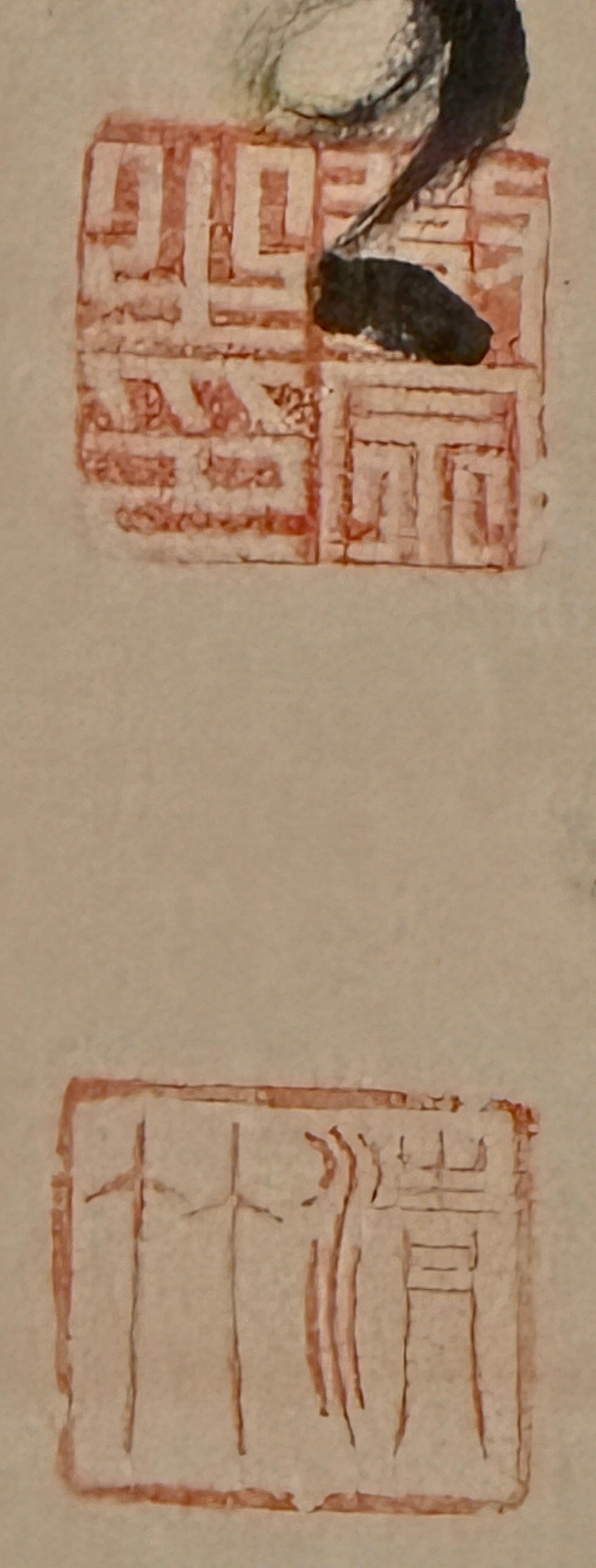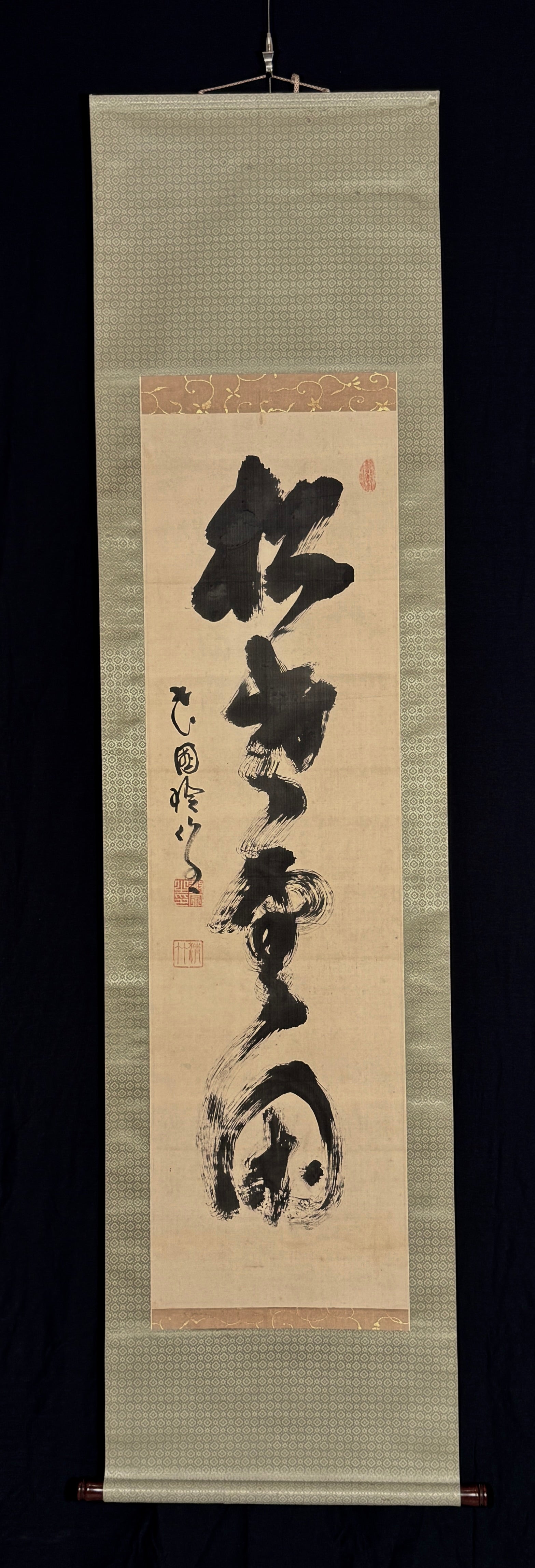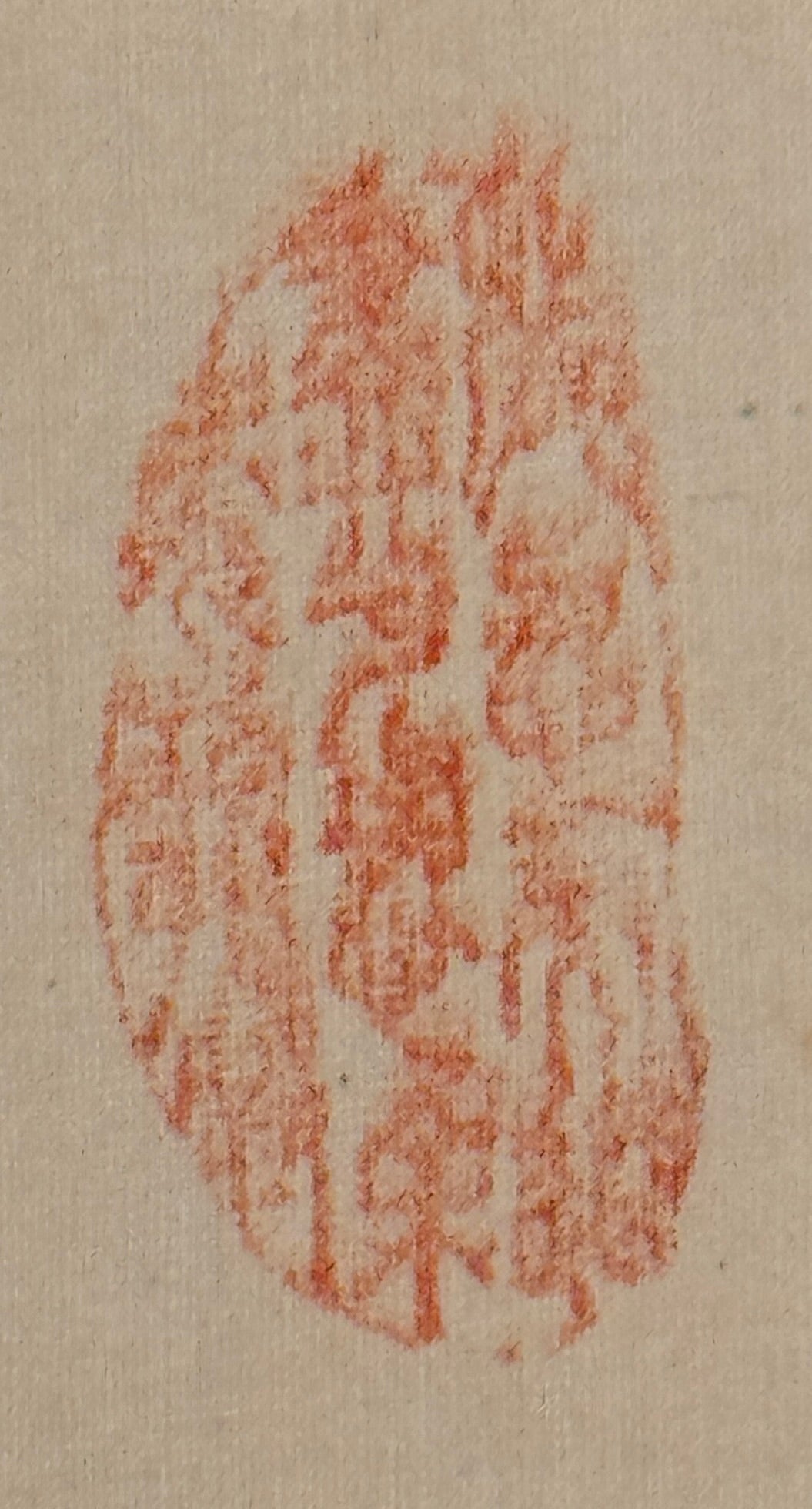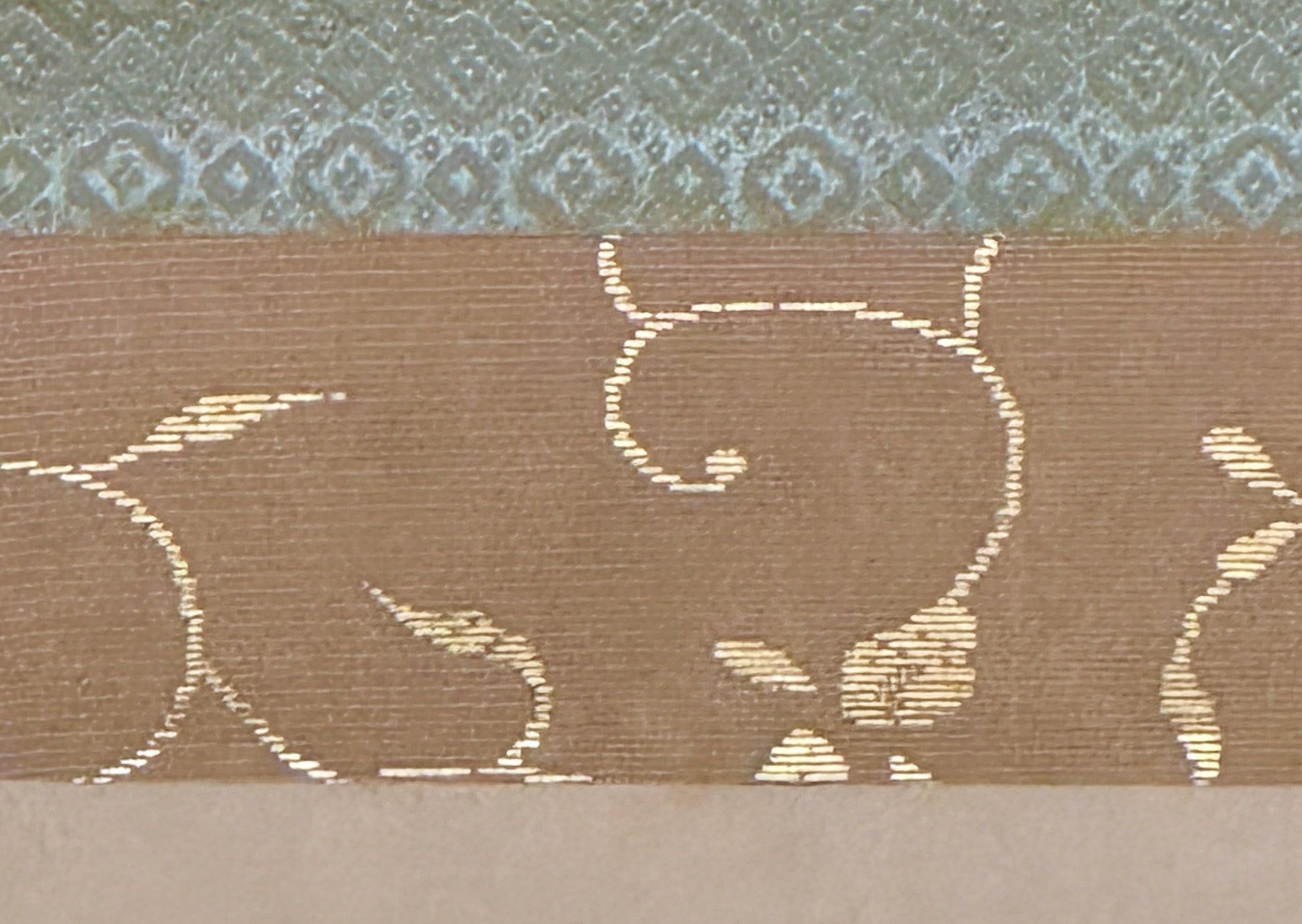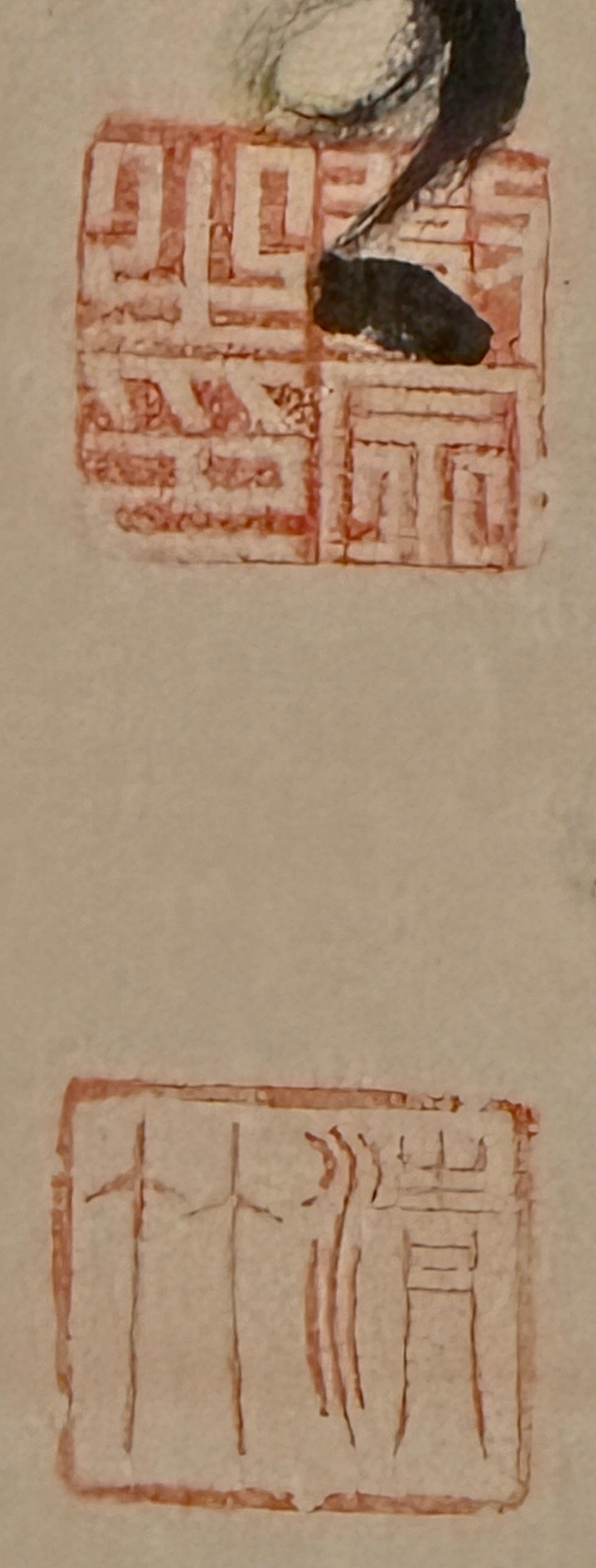Guignard Kyoto Collection
Calligraphy “Pine, old, calm, cloud” | Kōzuki Tesshū 神月徹宗 | 1879-1937
Calligraphy “Pine, old, calm, cloud” | Kōzuki Tesshū 神月徹宗 | 1879-1937
Couldn't load pickup availability
The name of this Rinzai Zen priest is also read as Kōgetsu instead of Kōzuki. He came from Hyōgo Prefecture and became administrative head (管長) of Myōshinji in Kyoto and was for a time rector of Hanazono University.
His calligraphy style is very reminiscent of the great calligrapher Jiun Onkō (1718-1804). He was therefore also called "Jiun of the Taishō period (1912-1926)". Like Jiun, he uses a thick, deliberately inelegant brush in this calligraphy. He obviously writes the entire calligraphy with one brush - saturated only once. It is also clear that he never stopped and started again, but wrote all four characters in a single stroke.
The four characters mean “pine”松, “old”老, “cloud”雲, “calm閑” . The Zen saying could be interpreted as follows:
" Just as the old pine tree radiates peace, one feels peace when looking at the cloud." But a more nuanced interpretation is also conceivable: Since pine trees live to a very old age and are always green, they are a symbol of longevity and permanence. But clouds, which are an extreme contrast to pine trees in their appearance and therefore a symbol of constant change, also submit to the laws of nature - the wind and the weather; they never disappear, because they are always being recreated. Both existences, as contrary as they are in their “aggregate state”, fill us with peace when we look at them, because they both convey a feeling of eternity in their own way.
The rhythm of the character design is impressive: at the beginning, the pine tree is clearly visible, standing there immovably, while the third character, the cloud, is greatly simplified and appears almost "misshapen". Then, for the end of the line, the calligrapher needs a base with which he can ground the column of writing, so to speak, and so he arches the character for "peace" particularly strongly with the remaining ink and takes his time for the last, well-formulated detail of this character .
